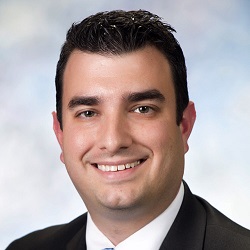Top-Level Takeaways
-
In search of a better branch experience, Community First Credit Union of Florida adopted an appointment-only model.
-
Changing calls to action and rethinking lobby furniture are just two of the six best practices the credit union has developed in the past year.
The COVID-19 pandemic has given Community First Credit Union of Florida ($2.0B, Jacksonville, FL) license to reimagine its branch experience. Through the aid of its process improvement team, the credit union has reconsidered the utility of its brick-and-mortar offerings, rethinking transactions and traffic entirely.
In the wake of the pandemic, the Florida credit union adopted an appointment-only model in its branches to safely accommodate those who needed the in-person experience need being the operative word. The credit union aimed to reroute as many transactions as it could to its digital channels, leaving universal tellers in the branch to process more complicated fare.

We want everyone to have a better experience, says Jimmy Lovelace, the credit union’s senior vice president of member experience.
According to Lovelace, the appointment-only branch strategy only works when members understand, and follow, the appointment system. For Community First, moving to and maintaining an appointment-only experience presented more than a few challenges, and Lovelace has identified several best practices from the past year post-switch. Here, the executive pinpoints six that credit unions should consider when implementing appointment systems of their own.
No. 1: Partner With Marketing
Lovelace says the first step to successful appointment-only banking is to partner with marketing to audit every piece of collateral for language.
“What are the calls to action?” Lovelace asks. “What does it say on your mailers or your digital leads?”
In its own audit, Community First discovered its calls to action tended to ask members stop by one of its Jacksonville-area branches to complete their request. Because members could no longer just pop into a branch, the credit union had to update that common legacy phrasing.
Rather than come into a branch, the credit union now asks members to call a direct number to reach a banker, visit a link to an online channel, or book an appointment. These new calls to action are a subtle reminder that the best way to complete a transaction has changed.
No. 2: Go All In
Switching to an appointment-only model is a big step that will have a large impact on members, and there will be some who are slow to adapt. Lovelace urges credit unions to stay strong and do not waver in the face of criticism.
We’ve had members come in and say, “This is ridiculous. I should be able to walk in and open this account,” he says.
The credit union counters those responses by assuring members that the new operational strategy is a better experience for members. It trusts that skeptical members will eventually come around.
“At the first sign of friction or dissatisfaction, credit unions will often shut it down and try a different way,” Lovelace says. “But the light at the end of the tunnel is worth the walk. We’ve got to be brave enough to try something, even if it is a bit uncomfortable, because it’s a better way to operate.”
No. 3: Steal From The Best
Appointment scheduling is new to financial institutions, but there are lots of industries where it’s old hat. And that’s where Community First looks for its best practices. For example, if a member comes in without an appointment, the credit union could turn them away but it doesn’t. Instead, it follows the playbook of nationwide hair salon franchise Great Clips.
“If you’re not in the system when you walk in, they put you in the system,” Lovelace says.
“It’s an opportunity for branch staff to perform a quality check on the request and educate members on better ways to complete their transaction. That allows the credit union to ensure the kind of appointments being made are of a high quality,” Lovelace says.
No. 4: Centralize The Scheduling
One person manages Community First’s appointment scheduling system. According to Lovelace, this employee is an air traffic controller of sorts, overseeing all the scheduled appointments and making changes to the reservations when necessary.
That traffic controller has rerouted appointments when branches had to shut down for a variety of reasons, from a positive coronavirus test to plumbing issues.
“When you have those issues, the employee can reassign appointments to a nearby branch and turn off appointment scheduling to the impacted one,” Lovelace says. “We’ve found it important to have someone manage that experience.”
No. 5: Call Before They Arrive
It sounds simple, but Community First is adamant that universal bankers call their appointments ahead of the scheduled meeting time. “Nothing complicated,” Lovelace says, “just a quick reminder.”
“Hey, my name is Jimmy,” Lovelace says by example. “I see you are coming in for this reason. I’m ready for you. See you at two o’clock.”
Not only does the call serve as a reminder, but it also helps both parties mentally prepare for the visit.
No. 6: Play With The Branch Geography
Moving to an appointment-only model has prompted the credit union to implement many changes to alter member behavior. Nowhere is that clearer than in how the credit union arranges the chairs in its branch lobbies.
“We don’t want people to sit and wait if they don’t have an appointment,” Lovelace says. “So, we took out most of the chairs in the lobby.”
Chairs invariably encourage sitting. Removing them signals to members that they really should have an appointment and next time they will.